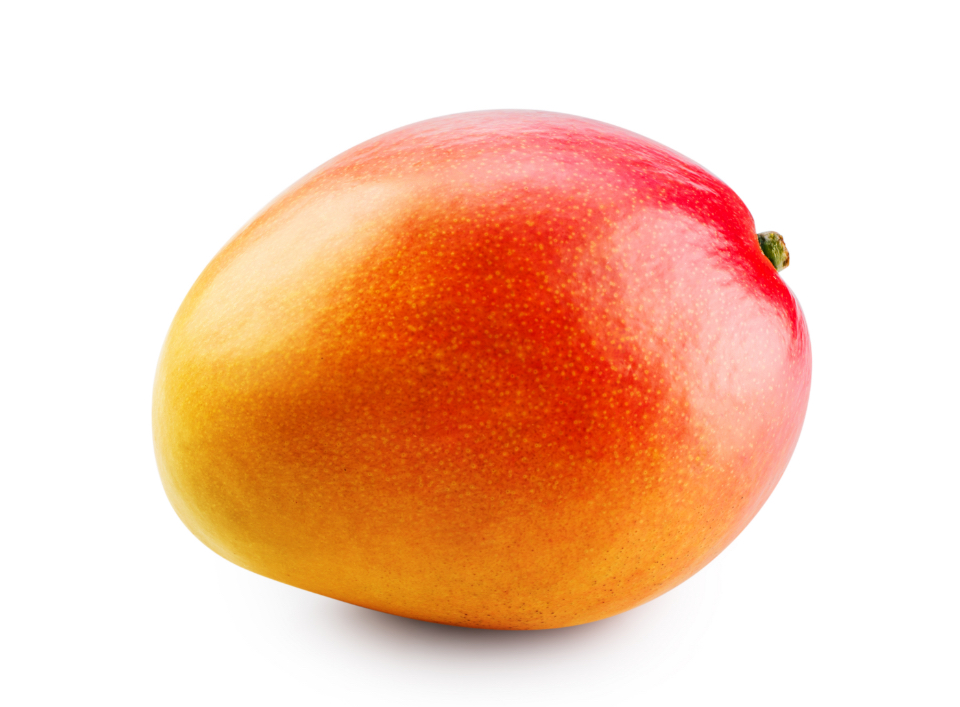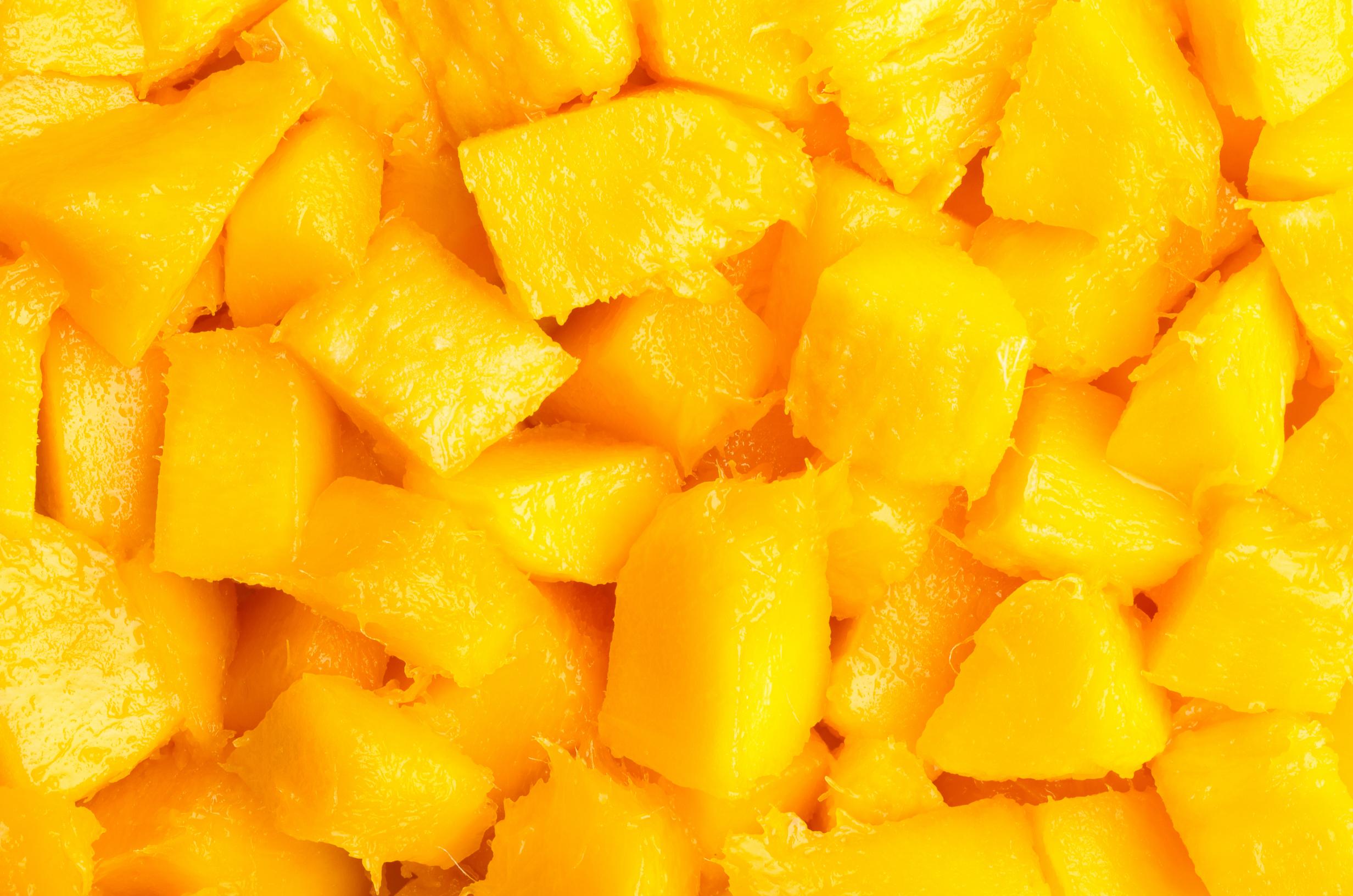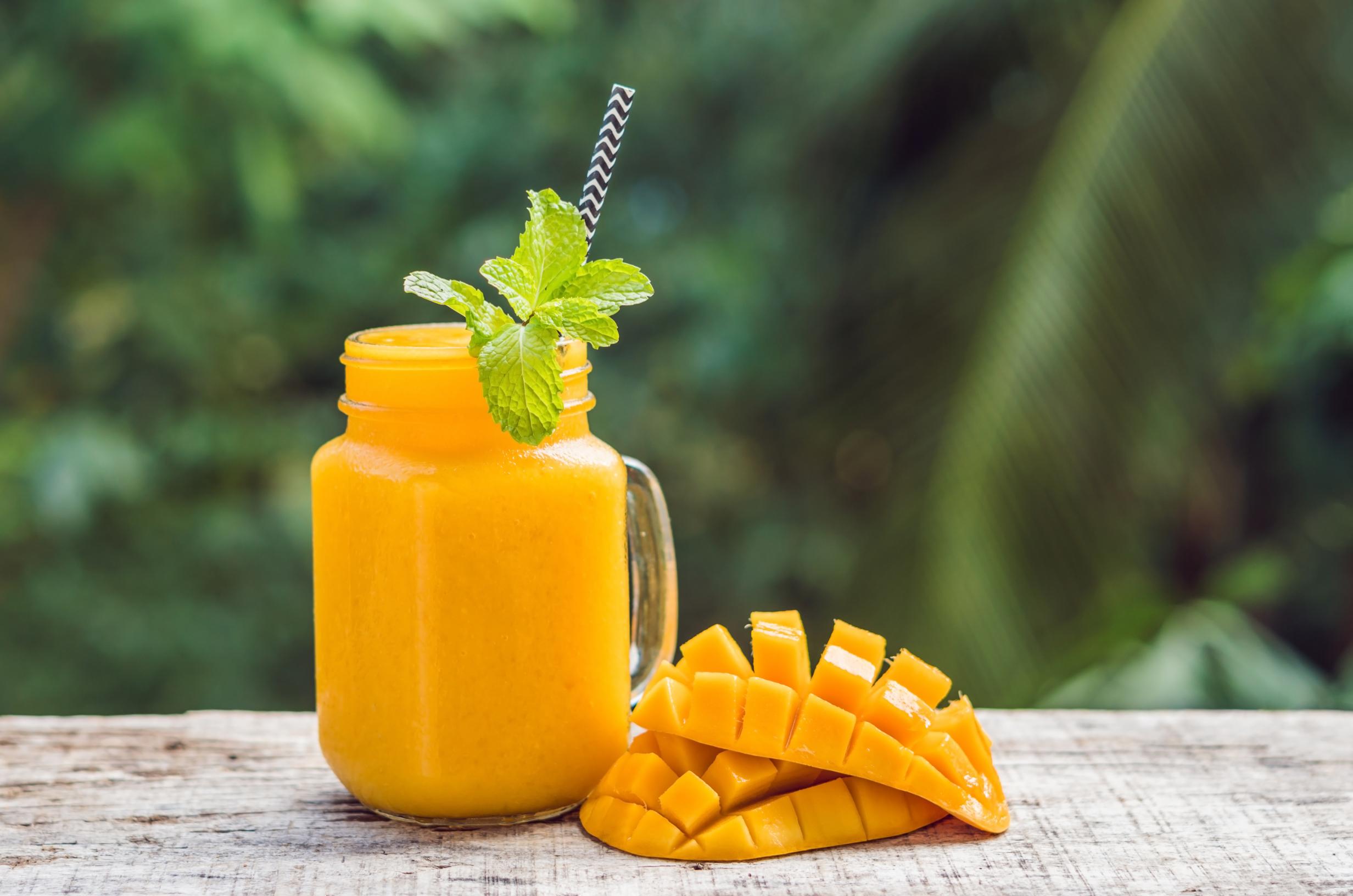This tropical fruit of Asian origin, is cultivated in many parts of the world, with plantations in Central America, South America, Asia, Australia, Europe and South Africa. Almost 75% of the production takes place in Asia, followed by Africa and Latin America. The main producing country is India, with 2.6% of the world production. In Europe, they are only grown in the south of Spain thanks to the subtropical climate of the Costa del Sol, which allows mangos of an excellent quality to be cultivated.
Mangos are one of the eight most eaten fruit in the world. Dozens of different varieties exist, of which the most cultivated and marketed are Plamer, Keitt, Kent, Tommy, Aktins and Osteen.
Each one of these has different characteristics and their flavour may vary slightly.
Due to being cultivated in many parts of the world and the numerous varieties available, mangos can be eaten all year round.



The mango exerts a diuretic effect thanks to its potassium content. As well as that, it has a high carbohydrate content which contributes to its important calorific value. Containing more than 20 vitamins and minerals benefit overall health and help prevent certain illnesses as well as sustaining a balanced diet.



Address: Barriada El Trapiche, Cortijo Armario s/n
29719 Vélez-Málaga, Spain
Tel: +952 500 827
Email: info@xarki.com
Necessary cookies are absolutely essential for the website to function properly. These cookies ensure basic functionalities and security features of the website, anonymously.
Functional cookies help to perform certain functionalities like sharing the content of the website on social media platforms, collect feedbacks, and other third-party features.
Performance cookies are used to understand and analyze the key performance indexes of the website which helps in delivering a better user experience for the visitors.
Analytical cookies are used to understand how visitors interact with the website. These cookies help provide information on metrics the number of visitors, bounce rate, traffic source, etc.
Advertisement cookies are used to provide visitors with relevant ads and marketing campaigns. These cookies track visitors across websites and collect information to provide customized ads.
Other uncategorized cookies are those that are being analyzed and have not been classified into a category as yet.